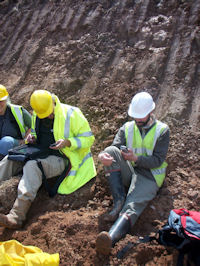
Figure 17: SASSA being used on laptop and PDA hardware in the field
Although the SASSA field tool is a useful training tool, the primary aim is to provide a system that will provide on-site support. SASSA has a number of design features to facilitate on-site use.
To prevent data corruption, each user has to have a separate account; the system will not allow two users to log into the same account simultaneously. To prevent fragmentation of the site archive when multiple users are recording information on-site, the system has a multi-user function that allows one designated user to import and collate data from other users. For each description, whether at site, trench or context level, the recorder can choose to provide access to another registered user. That named user can then import that data into a single centralised site archive that retains the hierarchical data structure and site, trench, and context associations.
While decision support systems have typically been associated with desktop systems and involve considerable processing, the development of new compact and mobile technologies provides new opportunities (Aronson et al. 2005). Work environments that do not facilitate desktop-based decision support can now be accommodated through the use of mobile technologies. Since accessing real-time information is essential for good decision making, the usefulness of mobile devices for decision support, in our opinion, is hard to overestimate.
Mobile technology is rapidly developing and encompasses a considerable number of devices, from small personal digital assistants (PDAs), to laptops and tablet PCs (Derballa and Pousttchi 2004). Mobile devices include the laptop computer, handheld devices, telephones, hybrids (e.g., 'smart phone' PDA/telephone), and vehicle-mounted devices with enabling technologies such as GPS and Blue Tooth. While all such devices can provide decision support benefits and, in a general sense, be considered mobile, devices in the form of PDAs and Smart Phones are of most relevance and are becoming increasingly popular with general users (Burstein et al. 2004; Carlsson et al. 2005).
The SASSA tool provides a central repository of archaeological information, which is not restricted to location or platform (Fig. 17). The tool addresses the changing way in which information is required and decisions are made by archaeologists, the impact this has on the type of systems developed, and the emergent technologies that facilitate such support.
SASSA has been designed primarily as an internet resource and will run over a wireless connection. A 'light weight', low-image version is also available for use over mobile phone networks in order to reduce costs and to provide an interface appropriate to small screened devices. Most currently available devices are automatically identified by SASSA and the lightweight version is presented, but in cases of non-recognition the view style can easily be changed via a link in the management toolbar.
A downloadable version of SASSA is also available which can be installed as a standalone on a laptop or PC, or can be loaded onto a USB memory stick for use as a plug-and-play device.
© Internet Archaeology/Author(s)
URL: http://intarch.ac.uk/journal/issue25/4/3.3.html
Last updated: Mon Dec 15 2008